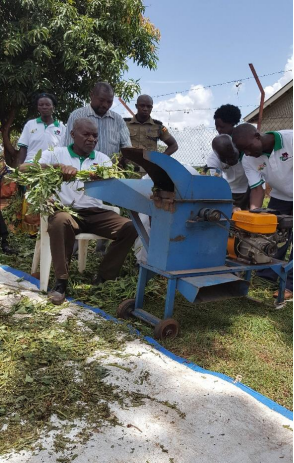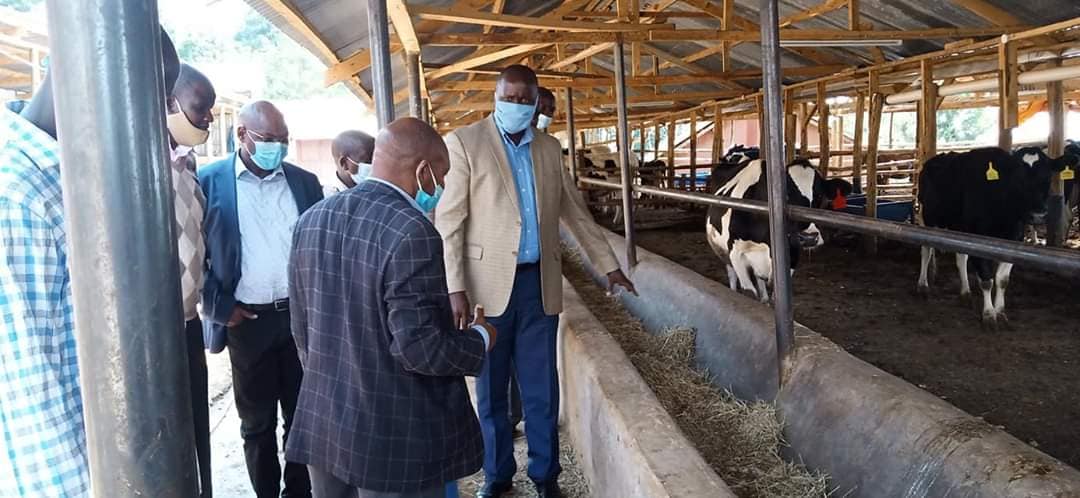Farmers rearing pigs can reduce the cost of production by a substantial percentage through adopting home-made feeds using readily available raw materials such as sweet potato vines which were formerly trashed after the harvesting of the tubers.
According to a 2017 research on the importance of sweet potato in small-scale farming systems in Uganda by Consultative Group on International Agricultural Research (CGIAR), sweet potato residues (peels, vines and non-commercial roots) are a major feed resource for pigs and are a cheap source of energy (roots) and protein (vines). Sweetpotato residues may be fed fresh, dried or ensiled. Proper conservation of sweet potato residues can help address the scarcity of nutrient feeds during periods of scarcity in prolonged dry seasons.
Pig feeding is the most expensive activity in pig rearing because it takes up to 80 per cent of the total recurrent budget of raising a pig from birth to market weight. There are several types of pig feed concentrates in used in the country today. These include Starter feed, Grower Feed, Sow and weaner feed, and pig finisher feed.
RELATED CONTENT: Commercial feeds help farmer achieve uniform growth and standard weight in pigs for better markets
Pigs are fed with these feeds depending on their age, Piglets require starter meal from one week to three months, and it is recommended that they are fed am always-ready diet that they may have continuous access to feed for a steady growth from the start.
Initially they eat very little but as they grow feed should be increased at an approximate rate of 50 grams per week and by the time they are three months old, each will be requiring about one kg of feed per day.
Rate of feed increase should be sustained all the way and by four months each pig would require about 2kg of pig growers feed per day. By the time they are four and half months a well growing pig requires about three kg of feed per day of Pig finisher in preparation for market at between 6 and 7months on average.
Water is of great importance for growing pigs and so should always be available for the animals as they grow otherwise they will not be able to feed properly hence growth rate will be affected.
RELATED CONTENT: New feed technology that increases weaning weight by 2.7kg in pigs
New technology
A new technology has been introduced in Kenya where pigs can be fed with sweet potato silage from three months old. It is still at the trial stage in Kenya but has been in use in the Far East and has been found to work.
This is used to complement the normal ration of the pigs such that they grow fast. Pigs should be fed on this silage to fill their stomachs so that they do not feel the pangs of hunger, hence will no spend any body reserves.
Sweet potato silage is actually fermented vines and roots for a minimum of three weeks. Fermentation process helps to break down trypsin enzyme found in fresh vines and inhibits digestibility of fresh vines when fed fresh.
Procedure of the sweet potato silage Making.
-Harvest the vines and the roots from the farm.
-Chop the vines in to small pieces about 2 to 3 inches long
-Chop the roots to small chips.
-Mix the chopped vines and roots in a ratio of 3:1.
-Wet the mixture with molasses diluted in a ratio of 1:10.
-Add some salt at 0.05 per cent.
-Pack the mixture in air tight containers either plastic bags of plastic containers
-Compress the material completely to ensure that all air is expelled out.
-Store for a minimum of three weeks
-Open and start feeding your pigs
RELATED CONTENT: How two pigs can give you close to Sh1 million in one Year
However, farmers should note that this does not completely replace commercial feeds, it only enhances the pigs’ growth rate hence one sells his pigs faster as it is taken to be a snack.
Other products that can be used as snacks for pigs includes pig weed (amaranth), lucerne, kales, spinach, ripe avocado pawpaw and other fruits and other soft plants full of proteins.
Pigs also enjoy the food eaten by people and are recommended that what a person eats cooked, give it to pigs cooked, and vice versa.
Photo1 caption: A farmer chopping sweet potato vines using a motorized forage chopper.
photo2 caption: Pigs feeding on fresh sweet potato leaves and vines.
Write comment (0 Comments)







 Government officials at Peter Chirchir's farm
Government officials at Peter Chirchir's farm










